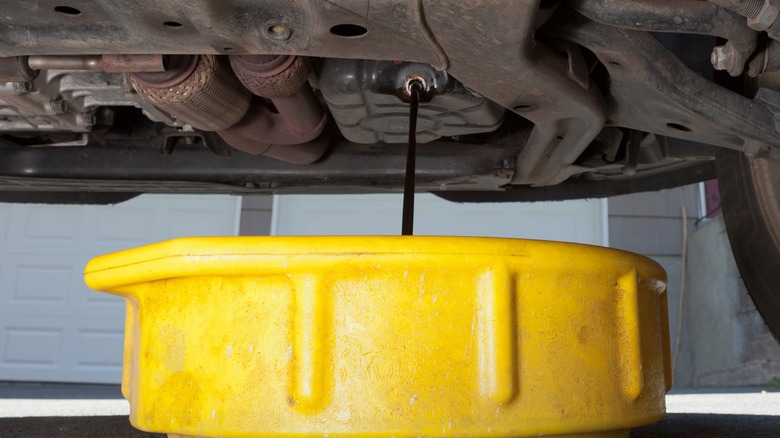I might be in the minority of car owners, but I actually enjoy changing my oil. My local big box store has bargain prices for jugs of long-lasting full-synthetic oil and carries OEM filters, so I can usually get out the door for less than $40 in materials for a DIY full-synthetic oil change. Saving money is definitely nice, but so is peace of mind. I’m forever scarred by the time my wife took her SUV to a rapid oil change place that didn’t fully tighten the drain plug. Fortunately, we caught the growing oil slick in our driveway before serious engine damage was done.
However, one of the more challenging aspects of the home oil change is removing said drain plug. First, you’ll need to remember what size wrench or socket to grab from the toolbox. Then, there’s the juggling act of maintaining inward pressure on the plug with your fingers while unscrewing to prevent oil from dribbling out. And finally, you pull the liberated drain plug away at lightning speed while still somehow getting hot oil on your hands and the floor.
It was for these reasons that the quick drain oil plug was invented. Quick drain oil plugs allow you to empty the contents of your engine’s oil pan by merely twisting a small valve. Many of these gadgets also have a fitting to attach a flexible hose to more precisely direct the outflow. The concept almost seems too good to be true, so why aren’t all vehicles equipped with this engineering marvel?
It’s more vulnerable than a regular drain plug
It’s been speculated that the reasons auto manufacturers don’t use drain valves as original equipment is because of their higher cost, and though that may be true, there are other considerations. A quick browse of some automotive message boards shows that drivers are concerned that the quick drain oil valves are considerably taller than a conventional low-profile drain plug. The logic is that it might be damaged or accidentally opened from striking an object, like an SUV-defeating rock.
That’s particularly concerning to owners of four-wheel drive vehicles who frequently travel off-road and are exposed to obstacles. Certain products have backup mechanisms like a steel cap to prevent spills in case the valve accidentally gets bumped open. Still, there’s no denying that an oil drain valve hangs down lower than a regular thread-in drain plug.
Another concern over quick drain oil plugs is that the drain opening is smaller than a conventional plug. That means that it’s going to take longer for all of your used oil to drain from the pan. In fact, some users level the accusation that the oil never drains 100% completely because the tip of the quick drain plug remains protruded into the oil pan while a regular screw-in plug opens the drain hole completely.
But there’s plenty of positives, too
Like with so many products, there’s going to be pros and cons to buying a quick drain oil plug. So far, we’ve been pretty pessimistic, but now it’s time for the positives, and that’s in addition to the basic premise of making oil changes neater and easier. Consider that you won’t be repeatedly screwing and unscrewing a threaded drain plug into the oil pan, which can lead to repairing stripped threads if done improperly. And let’s be honest, how many shadetree mechanics really use a torque wrench on their drain plugs? That drain plug could regularly be under or over-tightened whereas the quick drain valve is one and done.
Similarly, the rubber gaskets or metal crush washers that seal a traditional oil drain plug need to be replaced periodically. Opinions vary on how many oil changes can be performed in between replacing a drain plug’s seal, but the seal that’s built into the quick drain plug won’t need to be replaced because the valve remains permanently installed.
The grandfather of the oil drain valve is the Japanese company Fumoto, which invented the device in 1976 and began shipping it to the United States in 1984. Since then, others have mimicked the design or developed what they consider to be improved versions. Clearly, there are many fans of the quick drain oil plug concept, while other gearheads don’t trust it to stay closed or drain every drop of old oil. Which camp do you fall into?


